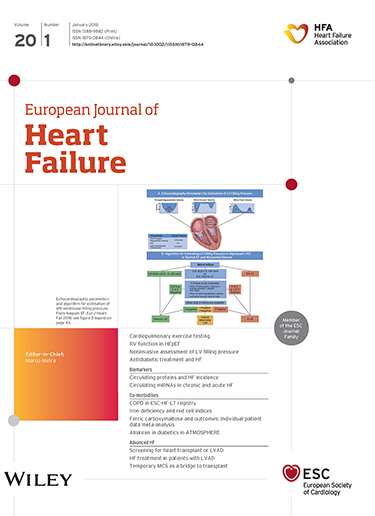Update on preclinical models of cancer therapy-related cardiac dysfunction: Challenges and perspectives. A scientific statement of the Heart Failure Association (HFA) of the ESC, the ESC Council of Cardio-Oncology, and the ESC Working Group on Cellular Biology of the Heart
IF 16.9
1区 医学
Q1 CARDIAC & CARDIOVASCULAR SYSTEMS
引用次数: 0
Abstract
New anticancer therapies with potential cardiovascular side effects are continuously being introduced into clinical practice, with new and often unexpected toxicities becoming apparent only after clinical introduction. These unknown toxicities should be identified and understood beforehand to better prepare patients and physicians, enabling the implementation of effective treatments. Therefore, there is a crucial need for appropriate preclinical models to understand the biological basis of their cardiotoxicity. This scientific statement summarizes the preclinical models hitherto used, from in vitro two- and three-dimensional human systems to small and large animals, to pinpoint the molecular mechanisms behind the cardiotoxicity of new-generation anticancer therapies, particularly immunotherapies, and to develop potential cardioprotective strategies. Furthermore, it discusses how preclinical models have contributed to the provocative concept of heart failure being potentially tumorigenic and how the discovery of drugs with both anticancer and cardioprotective actions has revealed a common mechanistic basis for heart failure and cancer. Finally, it discusses the existing gaps between preclinical models and clinical observations in patients, how these discrepancies affect regulatory pathways and the drug development process in cardio-oncology and provides recommendations for closing these gaps.癌症治疗相关心功能障碍临床前模型的最新进展:挑战和观点。ESC心力衰竭协会(HFA)、ESC心脏肿瘤学委员会和ESC心脏细胞生物学工作组的科学声明
具有潜在心血管副作用的新的抗癌疗法不断被引入临床实践,新的和通常意想不到的毒性只有在临床应用后才变得明显。应该事先识别和了解这些未知的毒性,以便患者和医生更好地做好准备,实施有效的治疗。因此,迫切需要适当的临床前模型来了解其心脏毒性的生物学基础。本科学声明总结了迄今为止使用的临床前模型,从体外二维和三维人体系统到小型和大型动物,以查明新一代抗癌疗法(特别是免疫疗法)心脏毒性背后的分子机制,并开发潜在的心脏保护策略。此外,它还讨论了临床前模型如何促成心力衰竭潜在致瘤性这一具有争议性的概念,以及具有抗癌和心脏保护作用的药物的发现如何揭示了心力衰竭和癌症的共同机制基础。最后,讨论了临床前模型与患者临床观察之间存在的差距,这些差异如何影响心脏肿瘤学的调节途径和药物开发过程,并提供了缩小这些差距的建议。
本文章由计算机程序翻译,如有差异,请以英文原文为准。
求助全文
约1分钟内获得全文
求助全文
来源期刊

European Journal of Heart Failure
医学-心血管系统
CiteScore
27.30
自引率
11.50%
发文量
365
审稿时长
1 months
期刊介绍:
European Journal of Heart Failure is an international journal dedicated to advancing knowledge in the field of heart failure management. The journal publishes reviews and editorials aimed at improving understanding, prevention, investigation, and treatment of heart failure. It covers various disciplines such as molecular and cellular biology, pathology, physiology, electrophysiology, pharmacology, clinical sciences, social sciences, and population sciences. The journal welcomes submissions of manuscripts on basic, clinical, and population sciences, as well as original contributions on nursing, care of the elderly, primary care, health economics, and other related specialist fields. It is published monthly and has a readership that includes cardiologists, emergency room physicians, intensivists, internists, general physicians, cardiac nurses, diabetologists, epidemiologists, basic scientists focusing on cardiovascular research, and those working in rehabilitation. The journal is abstracted and indexed in various databases such as Academic Search, Embase, MEDLINE/PubMed, and Science Citation Index.
 求助内容:
求助内容: 应助结果提醒方式:
应助结果提醒方式:


